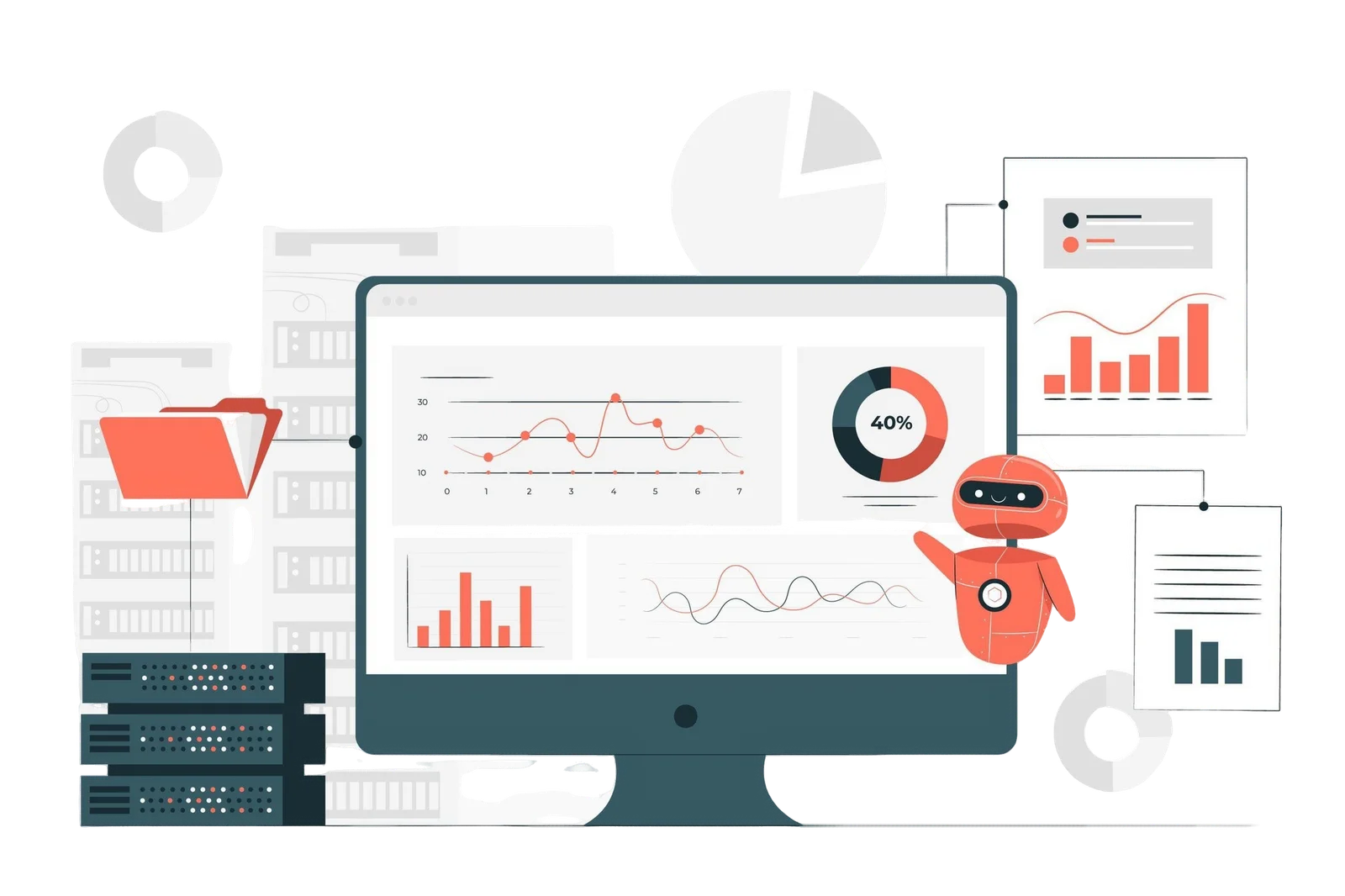

Essential Data Science Projects for Beginners: A Guide to Building Foundational Skills
Published: 2025-01-11 10:25:41
Data science has become a pivotal field, driving innovation across industries by enabling data-driven decision-making and the development of intelligent systems. For beginners, diving into data science projects for beginners is an excellent way to build essential skills and gain practical experience. These projects not only help in mastering tools and techniques but also provide a deeper understanding of how data science solves real-world problems. In this article, we will explore various data science projects for beginners, explain key concepts such as data cleaning, modeling, and analysis, and present a table format to simplify the steps involved in each project.
What are Data Science Projects for Beginners?
Data science projects for beginners are simplified, hands-on tasks designed to introduce novices to core data science concepts. These projects typically involve working with structured data, learning programming languages like Python or R, applying statistical techniques and visualizing insights. They serve as a stepping stone to more complex, real-world projects.

Importance of Data Science Projects for Beginners
- Building a Strong Foundation: Beginners get a chance to understand the basics of data handling, cleaning, and manipulation.
- Practical Learning: Hands-on projects help in applying theoretical knowledge to real-world scenarios.
- Career Growth: Developing a portfolio of data science projects increases employability and skills visibility.
- Confidence Building: Completing projects helps in building confidence in data analysis and modeling.
Know About: Data Science vs Machine Learning: Key Differences Explained
Examples of Data Science Projects for Beginners
Here are several examples of Data Science Projects for Beginners that are designed to help you apply foundational skills and build a solid portfolio:
AI Tools for Digital Marketing 2025
Android App Development Certification Course
1. Exploratory Data Analysis (EDA) on a Dataset
Objective: Perform an in-depth analysis of a dataset to understand its structure, and relationships between variables, and identify patterns.
Steps:
- Load data using libraries like Pandas.
- Clean the data by removing or handling missing values.
- Explore the data using statistical methods and visualizations (histograms, scatter plots, etc.).
- Summarize key findings and conclude.
Dataset: Titanic dataset, Iris dataset, or any open data available on platforms like Kaggle.
2. Predicting House Prices
Objective: Use a regression model to predict house prices based on factors like area, number of rooms, and location.
Steps:
- Load a housing dataset (e.g., Boston Housing dataset).
- Clean the data and handle missing values.
- Engineer features (e.g., create a new variable like "price per square foot").
- Use a linear regression model to predict prices.
- Evaluate the model performance using metrics like RMSE (Root Mean Squared Error).
Dataset: Kaggle’s "House Prices - Advanced Regression Techniques."
3. Sentiment Analysis of Customer Reviews
Objective: Analyze customer reviews to classify them as positive, negative, or neutral based on text.
Steps:
- Collect text data from customer reviews (e.g., from an e-commerce site).
- Preprocess the text by removing stop words, punctuation, and normalizing text.
- Extract features using methods like TF-IDF or word embeddings.
- Use classification algorithms like Logistic Regression or Naive Bayes to classify the reviews.
- Evaluate the model using accuracy or F1-score.
Dataset: Amazon Product Review dataset or Twitter Sentiment Analysis dataset.
4. Recommendation System
Objective: Build a recommendation system to suggest items (e.g., movies, products) to users based on their preferences.
Steps:
- Collect interaction data (user-item ratings or interactions).
- Implement collaborative filtering methods (e.g., using user-based or item-based approaches).
- Alternatively, use content-based filtering using item attributes.
- Evaluate the model’s performance with metrics like Mean Squared Error (MSE) or Precision/Recall.
Dataset: MovieLens dataset for movie recommendations or Amazon product data.
Become a Successful Business Intelligence Analyst
Benefits of Digital Marketing Course
Best Digital Marketing Course in India
Best Digital Marketing Institute in Delhi
Best Mobile App Development Course
Best Mobile App Development Course Certification
5. Classifying Images with Machine Learning
Objective: Build a model to classify images (e.g., distinguishing between cats and dogs).

Steps:
- Use datasets with labeled images (such as the "Dogs vs. Cats" dataset).
- Preprocess images (resize, normalize).
- Use machine learning models like Decision Trees or Convolutional Neural Networks (CNNs) for image classification.
- Evaluate the model using an accuracy or confusion matrix.
Dataset: Kaggle's "Dogs vs. Cats" dataset.
6. Sales Forecasting
Objective: Predict future sales based on historical data, seasonality, and trends.
Steps:
- Load historical sales data (e.g., from an online store or physical retail store).
- Perform time series analysis to detect trends, seasonality, and cyclic patterns.
- Use models like ARIMA, Holt-Winters, or machine learning models to forecast sales.
- Evaluate the model using metrics like MAE (Mean Absolute Error) or RMSE.
Dataset: Walmart sales data or any retail store's historical sales data.
7. Customer Segmentation
Objective: Use clustering algorithms to group customers into distinct segments based on their purchasing behavior.
Steps:
- Collect data on customer demographics and purchasing behavior.
- Preprocess the data (normalization, handling missing values).
- Use clustering algorithms like K-means or DBSCAN to segment the customers.
- Analyze the clusters to identify patterns or actionable insights.
Dataset: E-commerce or retail customer dataset.
Best Programming Languages to Learn in 2025
Big Data Analytics in Data Science
Can I Learn Coding After 10th?
Career Opportunities and Salaries for MERN Stack Developers
Data Science Course Duration and Fees 2025
8. Credit Card Fraud Detection
Objective: Identify fraudulent credit card transactions using machine learning.
Steps:
- Obtain a dataset containing legitimate and fraudulent credit card transactions.
- Clean and preprocess the data (balance the dataset, handle missing values).
- Use classification models like Logistic Regression, Random Forest, or XGBoost.
- Evaluate the model with metrics like Precision, Recall, F1-score, and AUC (Area Under the Curve).
Dataset: Kaggle's "Credit Card Fraud Detection" dataset.
9. Stock Price Prediction
Objective: Predict future stock prices based on historical data.
Steps:
- Collect historical stock price data for a specific company or index.
- Clean the data and engineer relevant features (e.g., moving averages, volatility).
- Use time series forecasting techniques like ARIMA or machine learning models like Random Forest.
- Evaluate the prediction model using MAE or RMSE.
Dataset: Yahoo Finance or Quandl.
10. Traffic Prediction System
Objective: Predict traffic flow or traffic congestion at different times and locations.
Steps:
- Collect data on traffic patterns (such as from city traffic datasets).
- Preprocess the data and engineer features related to time, weather, and historical traffic conditions.
- Use machine learning models (e.g., Random Forest, XGBoost) or time series models (e.g., LSTM for sequence prediction).
- Evaluate the model using metrics like Mean Absolute Error or R^2.
Dataset: City traffic data or datasets available on Kaggle.
11. Sports Analytics (Player Performance Prediction)
Objective: Predict player performance in a given sport, such as basketball or football, based on historical data.
Steps:
- Collect data on player statistics (e.g., goals, assists, shooting accuracy, etc.).
- Clean and preprocess the data to handle missing or inconsistent values.
- Apply regression or classification models to predict performance metrics.
- Evaluate model performance with appropriate metrics like RMSE, Precision, or Recall.
Dataset: NBA player stats, FIFA player data, or similar sports datasets.
12. Text Classification for Spam Detection
Objective: Classify messages or emails as spam or non-spam.

Steps:
- Collect labeled data of messages or emails.
- Preprocess the text by tokenization, stemming, and removing stop words.
- Use classification algorithms like Naive Bayes or Support Vector Machines.
- Evaluate model performance using accuracy, confusion matrix, or F1-score.
Dataset: Enron Spam dataset or SMS Spam Collection.
Each of these Data Science Projects for Beginners provides hands-on experience with real-world data and will help you hone your skills in data manipulation, machine learning, and analysis. Starting with these projects, you can gradually advance to more complex tasks as you build your portfolio and expertise in the field of data science.
Steps to Undertake a Data Science Project for Beginners
- Choose a Project: Select a simple dataset and objective.
- Understand the Data: Perform initial exploration and cleaning.
- Feature Engineering: Create and transform features for better models.
- Model Building: Train and test machine learning models.
- Visualization and Interpretation: Visualize results and interpret insights.
Summary
Data science projects for beginners provide an excellent starting point for anyone looking to dive into the world of data analysis and machine learning. By engaging in projects such as Exploratory Data Analysis, Predictive Modeling, Sentiment Analysis, and Recommendation Systems, beginners can gain practical experience, enhance their problem-solving abilities, and build a strong portfolio. These hands-on projects not only teach essential skills like data cleaning, feature engineering, and model evaluation but also set the foundation for more advanced data science projects for beginners. Through continuous practice and learning, beginners can progress toward more complex challenges and deepen their expertise in the field.
FAQs
1. What are data science projects for beginners?
Data science projects for beginners are hands-on exercises that help individuals develop foundational skills in data analysis, machine learning, and statistical modeling. These projects involve tasks like data cleaning, visualization, and building predictive models using real-world datasets.
2. Why should I work on data science projects as a beginner?
Working on data science projects allows beginners to apply theoretical knowledge to practical problems. It helps develop problem-solving skills, understand key concepts like feature engineering and model evaluation, and build a portfolio that can be showcased to potential employers.
3. What are some examples of data science projects for beginners?
Some beginner-friendly data science projects include:
- Exploratory Data Analysis (EDA)
- Predicting house prices using regression
- Sentiment analysis of customer reviews
- Building recommendation systems
- Image classification with machine learning
4. Do I need to know programming to start data science projects?
Yes, basic knowledge of programming languages like Python or R is recommended for work on data science projects. Python, in particular, is widely used due to its extensive libraries (such as Pandas, NumPy, and sci-kit-learn) that make data manipulation and machine learning easier.
5. How can I find datasets for my data science projects?
There are many free resources to find datasets for your projects, such as Kaggle, UCI Machine Learning Repository, and open government data portals. These platforms provide a wide variety of datasets suitable for beginner projects in various domains.
Read Also: Data Science vs Data Analytics: Understanding the Difference


